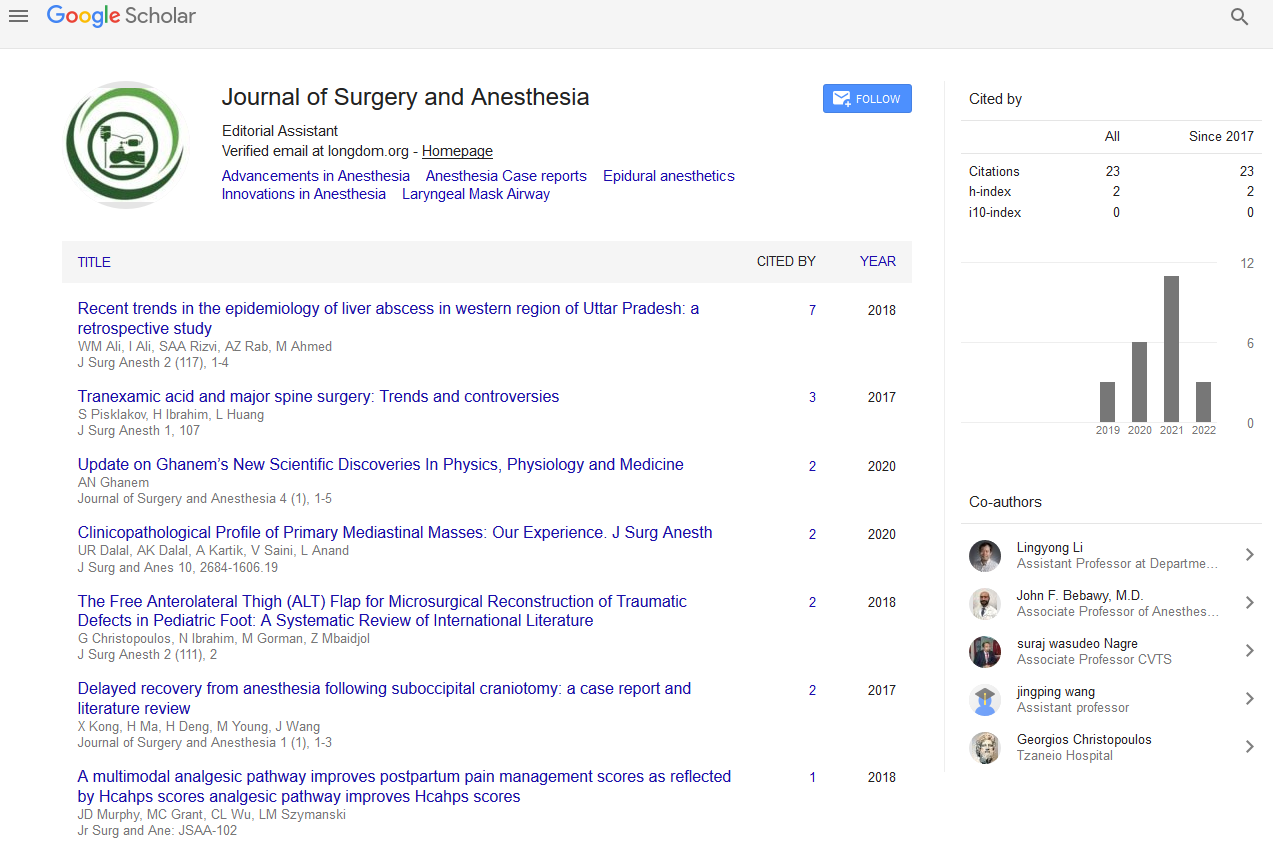Indexed In
- Google Scholar
Useful Links
Share This Page
Journal Flyer

Open Access Journals
- Agri and Aquaculture
- Biochemistry
- Bioinformatics & Systems Biology
- Business & Management
- Chemistry
- Clinical Sciences
- Engineering
- Food & Nutrition
- General Science
- Genetics & Molecular Biology
- Immunology & Microbiology
- Medical Sciences
- Neuroscience & Psychology
- Nursing & Health Care
- Pharmaceutical Sciences
Abstract
Pathophysiology of Concurrent Trauma and Exsanguinationv
El Rasheid Zakaria and Bellal Joseph
Trauma continues to remain the leading cause of morbidity and mortality in the developed countries [1]. Hemorrhage is the second most common cause of death after trauma, only outnumbered by traumatic brain injury [2]. Exsanguinating hemorrhage is the most common cause of mortality in the first hour of arrival to a trauma center and accounts for almost half of deaths in the first 24 h [3,4]. In addition, about 20-40% of trauma deaths that occur after hospital admission usually involve massive hemorrhage, in which death is potentially preventable [5]. Although the resuscitation protocols and management strategies for resuscitation of patients with exsanguinating hemorrhage have evolved in the past two decades, mortality among these patients remains high.

